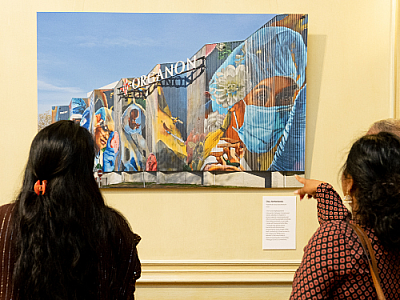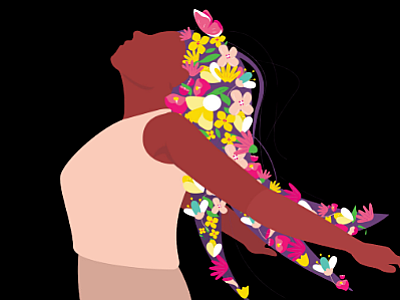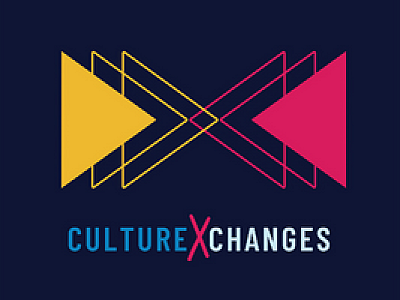In this U.S. government program, diplomacy has a hip-hop beat
For nearly two decades, the United States government has undertaken its own form of hip-hop politics. Rather than seeking to lead or direct rap, however, it has supported, sometimes unwittingly, a platform for hip-hop artists to fashion cross-cultural bonds with citizens of foreign nations. In “Build: The Power of Hip Hop Diplomacy in a Divided World,” Mark Katz, a musicologist at the University of North Carolina, details the underground history of these efforts.
At the center of Katz’s book is what he terms “hip-hop diplomacy,” a person-to-person practice that “offers the possibility of transforming conflict through cross-cultural performance and collaboration.” The U.S. government’s efforts in hip-hop diplomacy began only recently, in 2013, when a new program called Next Level — spearheaded by Katz — was born. Of course, deploying American performers in the service of international diplomacy stretches back into the mid-20th century, when the Yale Glee Club and classical performers, and later jazz musicians like Louis Armstrong and Dizzy Gillespie, staged concerts across the globe. With Next Level, these efforts shifted from large-scale concerts to small-scale workshops and other participatory programs aimed at fostering connections between visiting American artists and citizens of host nations.
Among Next Level artists, one is not likely to find many household names: no Cardi Bs or Kanye Wests or Post Malones. Most are grass-roots performers, reflecting a diversity that might surprise those who know hip-hop only by the Billboard charts. “As a whole,” Katz writes, “the Next Level ‘family’ (a term the artists use) have been more racially and ethnically diverse, more activist, queerer, more feminist, and less male-dominated than the general population of hip hop artists.” For these cultural ambassadors and the foreign artists with whom they interact, hip-hop is not simply a Trojan horse bearing American capitalist values but a vehicle for personal and communal expression.

Of course, hip-hop diplomacy isn’t without challenges. Katz readily acknowledges that the work can sometimes prove messy. He cites a 2015 mission to San Salvador, at a time when the U.S. government was undermining El Salvador’s national security even as it was sponsoring a Next Level program intended to combat violence there. “Our work to promote peace through music and dance generated an exquisite, unresolvable dissonance,” Katz writes. But dissonance, as any musician knows, is also part of the sonic tool kit. Many of the artists Katz introduces consciously grapple with the ethical and ideological implications of traveling under the flag of a government that does not always share their convictions. For some, these tensions present occasions for what Katz calls (by way of sociologist Ramón Grosfoguel) “subversive complicity”: when historically marginalized people use the engine of the state to do revolutionary work.
“These artists are not naïve,” Katz observes. Instead, they understand that the duty of active citizens is to affirm their government’s highest principles while resisting its lowest practices. In the age of Trump, the kind of cultural diplomacy Next Level promotes has become a subversive act. “These programs,” Katz writes, “were often designed to engage and support groups — women, the disabled, refugees — whom the president openly mocked or whose concerns he dismissed.” In this regard, Next Level artists are performing not simply an artistic but a patriotic duty: projecting an alternative vision of the United States to the world.
Katz, a self-described white “middle-aged professor,” might not seem like the most obvious emissary for a culture born among black and brown youth in the 1970s South Bronx. For those young artists then and for many more today, hip-hop is equipment for living, an essential lifeline for self-expression and communication. Katz respects this. Through his difference and his deference, Katz models a way of being at home in a culture that is not one’s own. He earns respect from the artists by his commitment to the cause; by his efforts to practice, however imperfectly, the art himself; and, most important, by his willingness to listen to and learn from those whose personal connections to hip-hop run deep.
Throughout much of the book, Katz renders himself nearly invisible, acting as a watchful chronicler of the remarkable cross-cultural exchanges happening among the artists. In one of the book’s most vivid passages, he describes an American rapper and a Moroccan musician trying, unsuccessfully, to jam together. The rapper can’t find his way comfortably into the shifting pocket of the traditional gnawa beat, setting off a riot of clashing rhythms. That’s when Katz observes the rapper move in close to the band leader and tap him gently on the shoulder in 4/4 time, beatboxing the measures until the musicians find the rhythm and soon, the groove. “Because they couldn’t speak with each other in Arabic, French, or English,” Katz writes, “they communicated through their gestures and facial expressions.” Their lingua franca was the rhythm.
Such moments of unexpected synergy in sound are occasions to forge more lasting bonds between citizens of distant nations that take root in spite of what their governments might do or say in their names. This is the promise of hip-hop diplomacy as Katz describes it: that it may foster deep connection in divided times, layering atop the geopolitical map another way of seeing our world — not just as a collection of fractured nations but as one planet under a groove.


